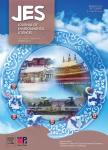Analysis of parental strain DNA fragments existing in GEMs-Fhhh
Analysis of parental strain DNA fragments existing in GEMs-Fhhh作者机构:TheNationalKeyLaboratoryofPollutionControlandResourceReuseSchoolofEnvironmentalScienceNanjingUniversityNanjing210093China DepartmentofEcology&BiodiversityTheUniversityofHongKongPokfulamRoadHongKongChina
出 版 物:《Journal of Environmental Sciences》 (环境科学学报(英文版))
年 卷 期:2003年第15卷第5期
页 面:590-594页
核心收录:
学科分类:083002[工学-环境工程] 0830[工学-环境科学与工程(可授工学、理学、农学学位)] 08[工学]
主 题:GEMs protoplast fusion target gene DNA fragment PCR pollution control
摘 要:There were 6 target DNA fragments of the three parental strains existing in the cell of GEMs(genetically engineered microorganism strain) Fhhh measured in this research by PCR(polymerase chain reaction). The determination showed that GEMs Fhhh contained all the 6 target DNA fragments, mnp 1, mnp 2、 lip 1、 lip 2, FLO 1 and 16S rDNA, and had the molecular genetic stability. Meanwhile the PCR production of each parental strain could only had its target DNA fragments and was different from each other. It may illustrate that the technique of the inter kingdom protoplast fusion for the construction of GEMs Fhhh through the process of intercellular gene recombination could be used as a reliable bioengineering technique to create the specific functional stain for the pollution control.



